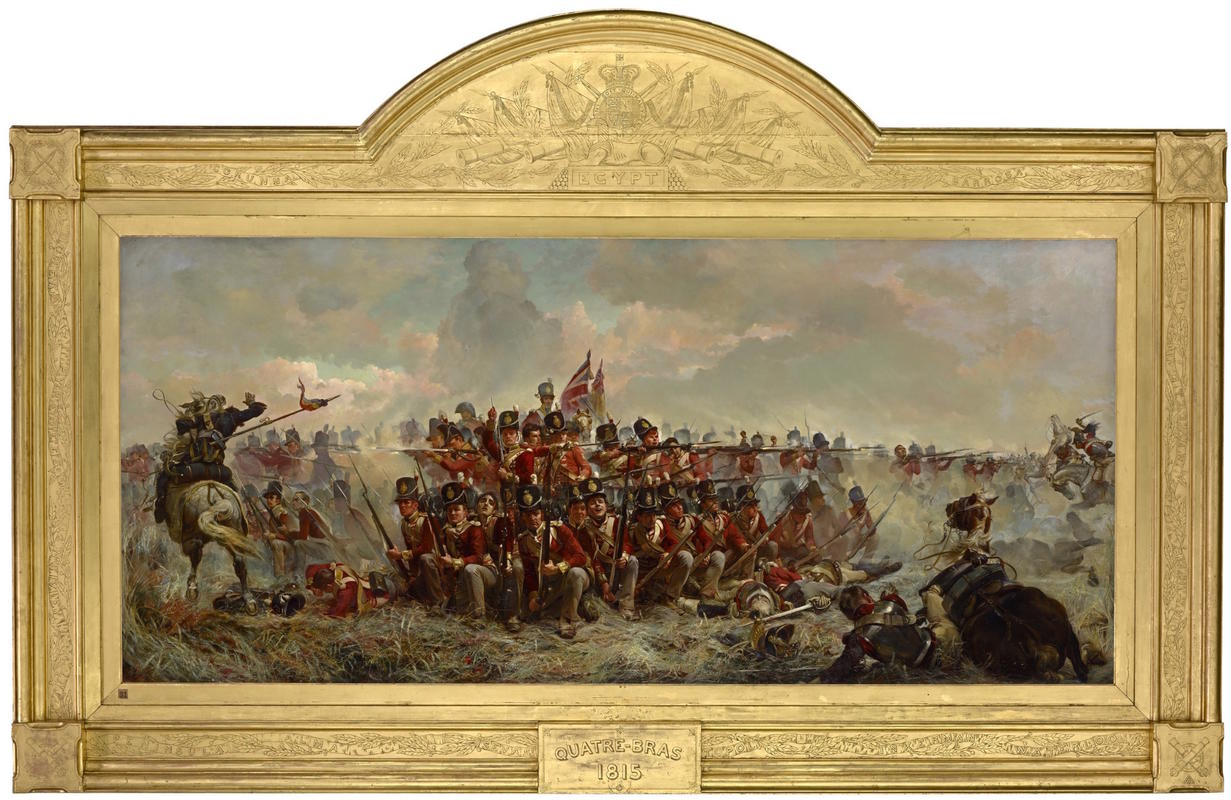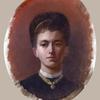If you think that any war fought prior to the invention of the machine gun is not worth studying, and/or you are an American, then you probably have no idea what Quatre Bras is.
But don’t worry, I have done all the googling for you. Quatre Bras was the scene of the second to last battle of the Napoleonic Wars, a prequel to the famed Waterloo where Emperor Napoleon was brutally stomped by the British. It was not a particularly spectacular battle for either side, however this makes the attention to detail given by Elizabeth Thompson all the more impressive.
The first thing that stands out about this painting is the focus on the individual soldiers. You will notice that in similar war paintings, most of the attention is given to the fighting itself as opposed to the people who were doing the fighting. Moreover, if any attention is given to individuals on the depicted battlefield they are normally generals, like in The Death of General Wolfe. This care given to the everyday soldier is a signature quality of Elizabeth Thompson’s work, however there are other details here that demonstrate her consideration goes even deeper. The most significant aspect of the work is the formation that the men are in. The painting depicts the corner of an infantry square, which was a significant military movement during the era of pre-modern warfare. It consisted of two lines of men armed with bayonetts set up in a square formation. This allowed the soldiers to create a sort of mobile home base in the middle of a battlefield, as anyone injured would be able to retreat to the center of the square to receive medical treatment. These squares were typically used against cavalry assaults, and as you can see here, the men of the 28th Regiment are defending from such an attack.
What makes this all the more impressive is that Elizabeth Thompson was neither present at this battle, nor likely knew anyone who had survived it as this picture was done sixty years after the Battle of Quatre Bras. Elizabeth Thompson would, of course, never have been close to a battlefield as she was not related to any soldiers, and as a woman was barred from such places.
Instead, she opted to recreate these scenes in a study. Typically artists not knowing what something looked like resulted in works similar to Albrecht Dürer’s Haller Madonna, however Elizabeth was able to avoid such a tragedy. In the end she effectively did with paint what Steven Spielberg could only do with 70 million dollars of special effects. As such this arguably one of the most undervalued works of 'war art' in history.
















I like this one because Elizabeth Thompson has used great strategy to paint that; also, we can see how the situation is on the field.